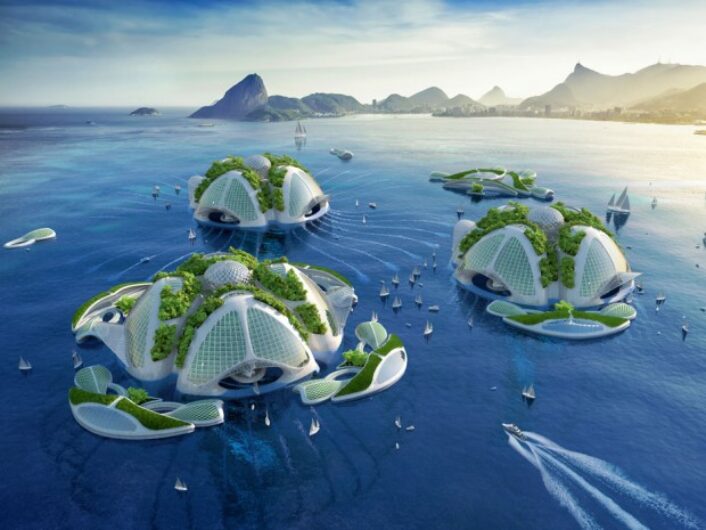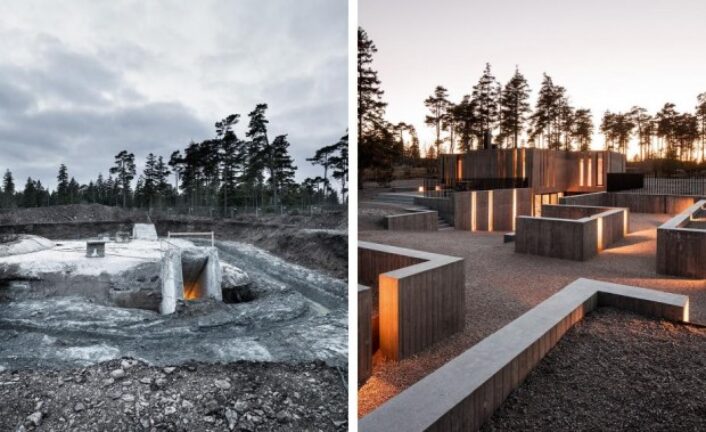A dive through Grenada’s Molinere Underwater Sculpture Park, courtesy of Dive Grenada.
Culture
Molinere Bay Underwater Sculpture Park

“Vicissitudes” is the most well-known sculpture at the park. The piece is made up of actual-sized figures of Grenada’s children holding hands and forming a circle.
Image courtesy of: Face 2 Face Africa
Grenada’s Molinere Underwater Sculpture Park was designed by the British sculptor Jason deCaires Taylor. The park opened in 2007 and it is now listed as one of National Geographic’s 25 Wonders of the World. An artist, Taylor was looking for more than “just art” when he designed the park. The artist hoped that the sculptures would aid in environmental sustainability by offering a habitat for marine life. Among those who “reside” within the park are corals, sponges, and algae.
Some of the sculptures are just six feet beneath the surface while others are much further down. More than seventy in total, the individual sculptures are bolted to the bottom of the seafloor… not that they would easily float away; some accounts estimate the sculptures to weigh 15 tons. Taylor constructed these items from concrete and steel so that he could ensure that they are a friendly surface for marine life to grow on. Within the past fifteen years, these man-made reefs have attracted a variety of marine life.
Interestingly, the sculptures begin as gray in color; however over the past few years, they have been altered by the environment in colors that range from pink to green… to black. Seeing the color transformation is part of the fun in coming back multiple times.
The underwater gallery covers an area of 8,000-square-feet, the location that involutes a number of sand patches and gullies between natural rock formations. Taylor hoped to help the ocean ecosystem regenerate after the damage suffered during 2004′ Hurricane Ivan. The specific and well-planned placement has provided an ideal new base for the proliferation of marine life.
Using a long-lasting and pH-neutral cement on the sculptures offers a favorable platform on which marine life such as coral can attach itself. Even though this was the first of its kind in the world, Taylor has expanded this innovate idea to other locations. Each spot chosen can be aided by positive publicity. Similar to Molinere Bay, those other locales need public awareness about the “fragility of the world’s environment and the destructive impact of industry and human habits the parks see.”
For the past 15 years, Taylor has been working to transform sea floors into public art spaces. As an environmentalist, underwater photographer, and sculptor, his work frequently explores the relationship between the natural world and humans.
Tapping into his creative side, Taylor realized that his underwater parks could lure both divers and tourists away from the sensitive reefs that had survived the hurricane. He says (courtesy of CBS News), “Maybe if I created something that was a distraction or a way to attract them to an area that was barren or that had been impacted by the hurricane, then…” We agree!
Even though this was his first park, Taylor is now in high demand. His underwater sanctuaries are present in locations from Mexico to the Maldives. Luckily you do not have to be a scuba diver in order to pursue these amazing installations; boats with clear, glass-like bottoms are available for those less adventurous tourists. This ensures that nobody needs to miss this unique experience. Sign us up!

